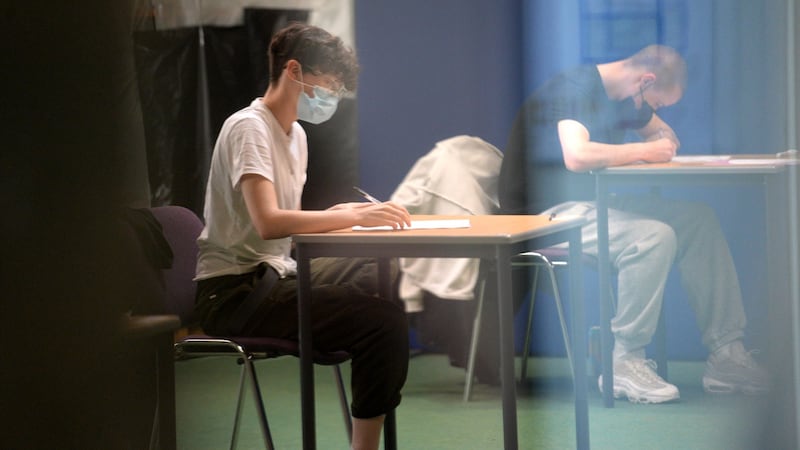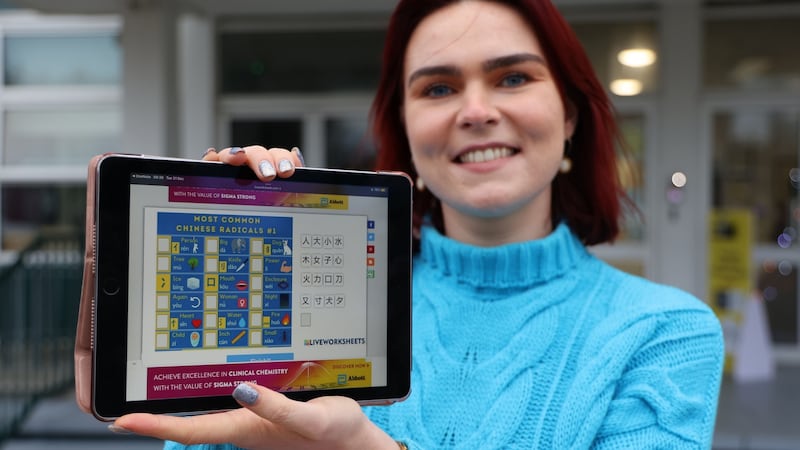1. Keeping schools open
Large-scale school closures look unlikely – but the challenge of maintaining in-person teaching will remain due to staff shortages caused by isolation rules linked to positive cases.
The availability of student teachers provided a lifeline in the final weeks of last term, but they are due to resume their studies after the midterm.
Another threat is the elevated risk of Omicron spreading rapidly in classroom settings. Anecdotally, schools that recorded just a handful of cases of transmission of Covid-19 were struggling with cases of the new variant during the final weeks of December.
However, Government policy remains that school closures will be a measure of last resort. Politically, it’s difficult to see State-sanctioned closures at a time when shops and cafes remain open.

2. Bursting the grade inflation bubble
Teacher shortages linked to Covid have already led to the shift of Leaving Cert oral exams to the first week of the Easter holidays. Further disruption will, inevitably, lead to student calls for a re-run of last year’s choice between teacher-assessed grades and exams.
Another key issue to be addressed will be grade inflation. Last year’s record set of high grades let to a surge in top marks and CAO points. In fact, some students who secured maximum points still didn’t get their first-choice course.
Norma Foley has signalled that grades will return to more normal levels this year in line with a return to more traditional exams.

The move would mean the class of 2021 (and, to a lesser extent, the class of 2020) will benefit from their record high grades if they reapply for college courses this year; thousands are expected to do so.
However, this risks edging out many of this year’s Leaving Cert students in the hunt for high-points courses. This will prove to be a delicate balancing act.
3. Quantifying learning loss

It’s still too early to assess the full extent of learning loss over the past two years, but the picture should become clearer very soon.
The results of standardised tests that took place in primary schools last year will give us the best insight into the impact on children’s learning.
Latest research from the Netherlands, which had a shorter period of school closures, is that online learning was not a success. Primary children performed on average 20 per cent worse on tests than equivalent groups did for the three years before the pandemic.
Among more marginalised students, learning losses were even greater: up to 60 per cent larger than for the general population.
Early research in Ireland indicates that we've had a similar experience: the pandemic widened pre-existing achievement gaps, hitting disadvantaged and special needs students hardest.
4. Professionalisation of early years education
For years it has been the Cinderella of the education sector – but that may be about to change.
Under ambitious plans, State funding for the sector is due to increase to €1 billion a year within six years. This should allow for a significant reduction in fees for parents in the future and, crucially, better salaries for staff working with young children.
Under the reforms, the sector will move from a predominantly private model to a new hybrid model that will be increasingly publicly funded and publicly managed. The professionalisation of childcare workers and educators is due to result in a graduate-led workforce by 2028.
5. Smaller class sizes
The pupil-teacher ratio at primary level is set to drop from 25:1 to 24:1 this year – the lowest on record. However, Irish classrooms remain the most overcrowded in the EU, where the average is 19:1.
Enrolment at primary level is set to keep dropping over the next decade due, mainly, to a dip in fertility rates. In fact, latest official projection indicate pupil numbers will drop by about 120,000 – more than 20 per cent – by 2033.
The sharp reduction may lead to surplus teachers at primary level and could threaten the future of some small schools. However, it also represents an opportunity to further reduce class sizes in the State, against a backdrop of the pandemic and major challenges with physical distancing in classrooms.
6. Wellbeing and mental health
In addition to learning loss, disruption to children’s education has resulted in social and emotional setbacks.
Hundreds of children did not return to school last year due to mental health and anxiety problems. The number of children approved for the receipt of home tuition due to mental health reasons and “school phobia” has jumped. while the National Educational Psychological Service – which supports schools and pupils – said there was an increase so-called school refusal behaviour.
It is unclear whether these pandemic-related issues will fade, but expect more calls for in-school counselling and therapeutic supports to meet the needs of vulnerable pupils
7. Cut to third-level fees?

Back in 2016 the Cassells report warned that maintaining the status quo for third-level funding was unsustainable.
The Government's response was to kick the can down the road and into the offices of the European Commission to compile a further report. That research, due to be published soon, is understood to estimate that core funding of €350 million-€400 million is needed for higher education.
Government sources have ruled out a student loan scheme to provide this additional funding and are in favour of increased State contributions, in addition to a potential cut to the €3,000 student contribution charge, and a greater emphasis on access initiatives. That’s the ambition – but will funding be available to match it?
8. Expansion of Deis
There has been long-running criticism that the Deis (Delivering Equality of Opportunity in Schools) programme excludes many schools that need additional support.
Under reforms to the programme, more schools are also due to be added to the scheme, which offers targeted support for students in disadvantaged areas by providing extra teaching staff and literacy and numeracy support.
An additional €18 million for the scheme would see in the region of about 200 or more schools added to the existing programme, which supports just under 900 primary and secondary schools. A reformed Deis programme may also provide for tapered supports, based on the level of disadvantage facing schools.
9. Supports for principals
School leaders were instrumental in keeping teaching and learning going last year and ensuring the safe reopening of schools.
Many, however, are frazzled by heavy workload and stress. Many grumble that middle-management posts at second level – in particular – are dysfunctional and not really easing the leadership burden.
They say additional deputy principal posts along with other support roles at primary are needed if school leaders are to focus on their main job of fostering the highest standards of teaching and learning.
10. Rise of apprenticeships

This should be the year that apprenticeships really begin to take off.
Employers who take on apprentices will receive an annual grant of €2,000 under a new initiative aimed at tackling skills gaps.
The move means financial support will be available to all apprentice employers for the first time.
There will also be new apprenticeship programmes such as advanced cybersecurity practitioner, wind turbine technician, manufacturing data integration engineer, advanced quantity surveyor, software solutions architect, and transport operations and commercial driving.
11. Technological universities take flight
By April there will be two new technological universities: the Atlantic Technological University (formerly GMIT, IT Sligo and LYIT) and a new technological university for the southeast (to be formed from the merger of IT Carlow and WIT).
It will bring to five the number of new technological universities established between the start of 2019 and 2022.
A key challenge will be to avoid replicating the work of traditional universities and drifting away from their core strength of providing regional and vocationally based accessible education with strong industry links.
12. Education turns to Europe and beyond

This year will see the addition of new languages such as Chinese, Polish, Portugese and Lithuanian added to the Leaving Cert curriculum. The flow of students choosing to study in Europe now exceeds those heading to the UK, according to latest estimates. There has also been a big jump in EU applicants applying for CAO places who might normally have chosen to study in the UK.
This could well be the year that Brexit really begins to register with students in their career and study options.



















